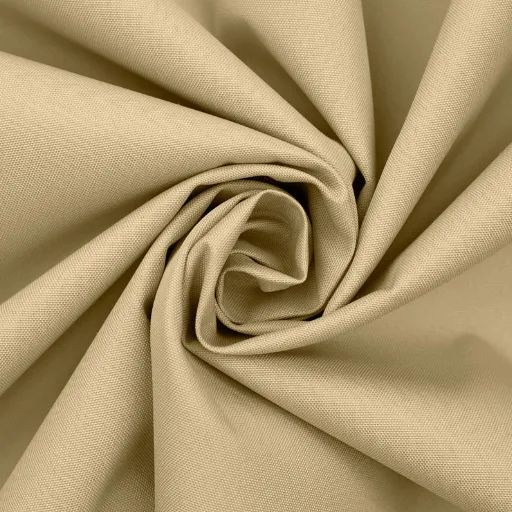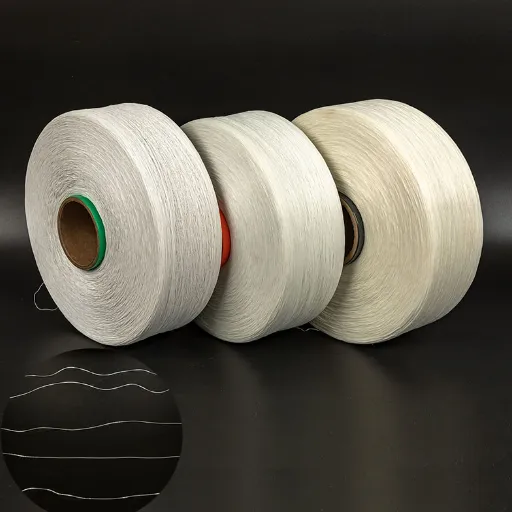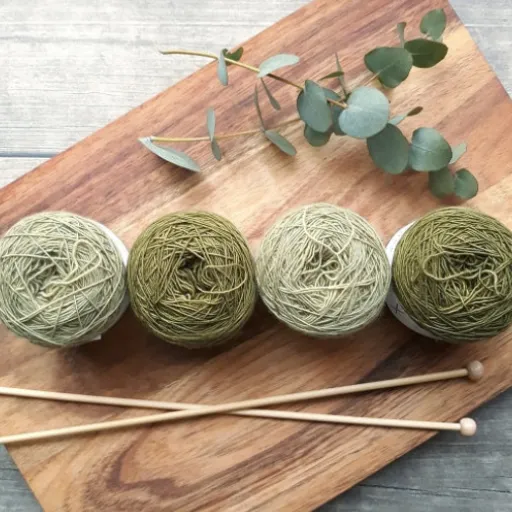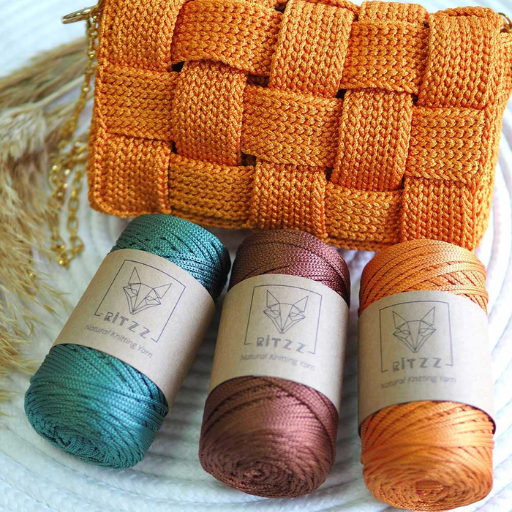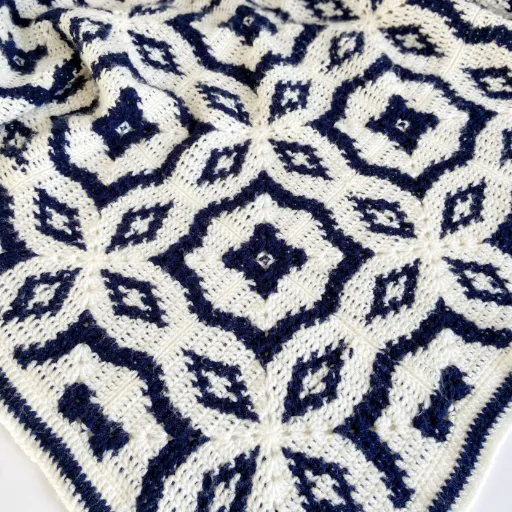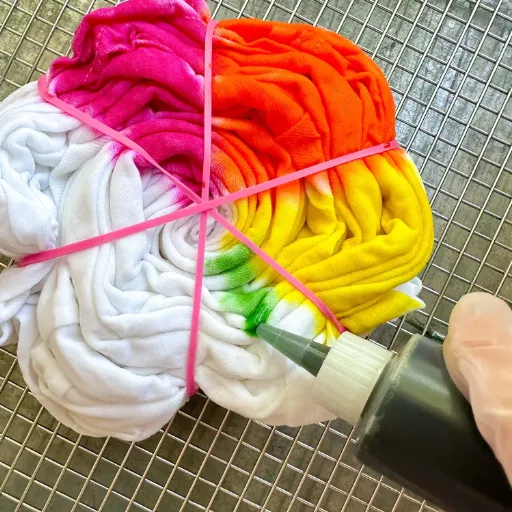Polyester fiber hoists as one of the most flexible and broadly adopted materials in the present-day textile industry. By its attributes of strength, low price, and versatility, polyester has been a basic material in all areas from garment manufacturing to industrial uses. However, what is the real cause of such a superiority of polyester fiber? This article goes into great detail of the peculiar features that differentiate it, unveils the complex procedures that are behind its manufacturing, and indicates its broad applications in various sectors.
Introduction to Polyester Fibers
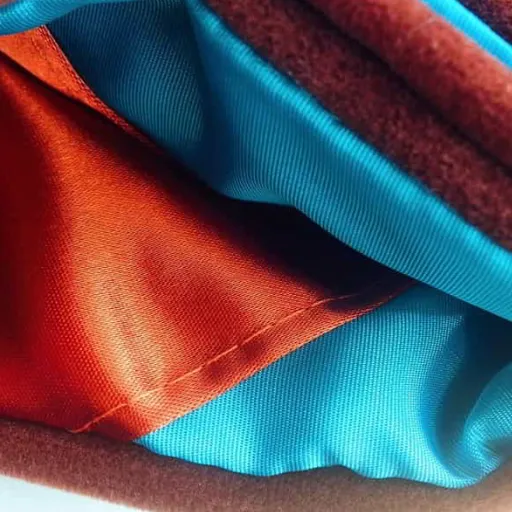
What is Polyester?
Polyester, a synthetic fiber, is mainly produced from petroleum-based products. It belongs to the polymer family, and its formation is catalyzed by purified terephthalic acid (PTA) or its dimethyl ester (DMT) and monoethylene glycol (MEG). The reaction results in a very strong and flexible material that can be either spun into threads or woven into fabrics; hence, it has become one of the most commonly used fibers in the world.
The lightweight and strong properties of polyester make it very useful in different sectors. Its high resistance to wrinkling, shrinking, and stretching is one of the factors that contribute to its being very popular in the manufacture of clothing and upholstery. Moreover, it has moisture-wicking and quick-drying properties, which make it a preferred fabric for activewear and outdoor equipment.
Polyester is also very remarkable for its versatility beyond the textile industry. Its use varies from making ropes, industrial belts to even plastic bottles. Innovations in recycling technology have opened up a way of producing polyester fibers from reclaimed materials thus lowering its environmental footprint. But since it is a synthetic product, it cannot decompose and this has led to continuous debates on its sustainability and place in today’s manufacturing operations.
💡 Key Facts About Polyester
- Made from petroleum-based products through polymer chemistry
- Highly resistant to wrinkling, shrinking, and stretching
- Excellent moisture-wicking and quick-drying properties
- Used in textiles, ropes, industrial belts, and plastic bottles
- Can be recycled but is not biodegradable
History of Polyester Fiber Development
The creation of polyester fibers dates back to the 20th century when scientists were investigating synthetic polymers among their first steps. However, the real turning point was the year 1941 when the British chemists John Rex Whinfield and James Tennant Dickson, the employees of the Calico Printers’ Association, patented polyethylene terephthalate (PET) which has become the most common form of polyester. This revolution gave birth to a new material that had the qualities of being durable, lightweight, and versatile, thus being perfect for different applications.
The commercialization of polyester fibers began in the United States late 1940s and it was the 1950s decade when the popularity and demand caught up with production. In the textile industry, polyester was the first choice because of its dry-dry feature, strength and easy cleaning compared to natural fibers like cotton. Another reason that helped the adoption of polyester in clothing and home furnishing was that it was a good mixer with other materials.
Technical know-how has been the major factor in upgrading polyester-making procedures. Besides, companies have adopted different strategies to alleviate the impact of their activities on the environment which include, among others, recycling of plastic waste to make new fibers that are less dependent on virgin resources. Polyester, being one of the top five synthetic fibers continues to take part in the domination of the modern-day manufacturing and consumer sectors.
📅 Historical Timeline
| 1941 | Polyethylene terephthalate (PET) patented by British chemists |
| Late 1940s | Commercialization begins in the United States |
| 1950s | Widespread adoption in textile industry |
| Present Day | Focus on recycling and sustainable production methods |
Understanding Synthetic Fibers
Types of Synthetic Fibers
Synthetic fibers, also referred to as human-made, are not natural fibers which are chemical substances transformed by various processes, mostly derived from petroleum-based products. Synthetic fibers usually mimic or improve the properties of natural fibers and thus they are more durable, flexible, or functional. The most common synthetic fibers are polyester, nylon, acrylic, and spandex. Properties such as elasticity, resistance to moisture, and strength have been responsible for the careful selection of each of these fibers for specific applications ranging from clothes to industrial materials.
| Fiber Type | Key Properties | Common Applications |
|---|---|---|
| Polyester | Strong, wrinkle-resistant, quick-drying | Clothing, upholstery, outdoor gear |
| Nylon | Elastic, abrasion-resistant, lightweight | Hosiery, sportswear, industrial ropes |
| Acrylic | Soft, wool-like, warm | Sweaters, blankets, carpets |
| Spandex | Highly elastic, form-fitting | Activewear, swimwear, undergarments |
Advantages of Synthetic Fibers
Synthetic fibers have a wide range of applications as their primary advantage. They are made to be very strong and resistant to daily wear and tear like natural fibers, hence they are used in products that are used every day more such as clothing, upholstery, and outdoor gear. Besides their long lifespan, they are also cheaper than natural fibers as they can be produced in large quantities. In addition, synthetic fibers are often made to be water, stain, and wrinkle resistant, hence they are low maintenance and can be used in various applications.
✓ Durability
Strong resistance to daily wear and tear, extending product lifespan
✓ Cost-Effective
Can be produced in large quantities at lower costs than natural fibers
✓ Low Maintenance
Water, stain, and wrinkle resistant properties make cleaning easy
Environmental Considerations
However, the environmental impact of synthetic fibers is still an important issue as they are not biodegradable, depend on fossil fuels and contribute significantly to microplastic pollution. Each time synthetic garments are washed, very small microplastic particles are released into the water, which eventually end up accumulating in the ocean. Nevertheless, the development of biodegradable fibers, recycling, and other eco-friendly practices are all-in-all aimed at reducing the environmental impacts related to the use of synthetic fibers. The efforts demonstrate how important it is to harmonize the opposite interests of sustainability and functionality in fiber production.
⚠️ Environmental Challenges
- Non-biodegradable: Synthetic fibers do not decompose naturally
- Fossil fuel dependency: Most synthetic fibers are petroleum-based
- Microplastic pollution: Washing releases particles into water systems
- Ocean accumulation: Microplastics end up in marine environments
Types of Polyester Fiber

Different Types of Polyester
The classification of polyester fibers is based on their manufacture and composition which consequently determine their properties and use. The three most common types of polyester are PET (polyethylene terephthalate), PCDT (poly-1,4-cyclohexylene-dimethylene terephthalate), and bio-based polyester. Each type has its pros and cons owing to the different characteristics.
PET polyester is far and away the most commonly used type and is given full credit for its high strength, long life, and light nature. It finds its way into textiles, furniture, and even packaging. Out of the two, PCDT polyester is rarer but still famous for its terrific pipe-like stretch and ability to bounce back, thus bolstering its use in areas like upholstery and industrial fabrics where heavy-duty work is involved.
Bio-based polyester is a newcomer whose primary focus is to lessen the impact on the environment. This polyester is synthesized from renewable plant-based materials instead of petroleum, thus it has a lesser environmental footprint than conventional synthetic fibers. Even though still in the research phase, bio-based polyester is already showing potential for green applications that do not compromise the performance of the product. These diverse types of polyester present an alternative solution that serves a wide range of industries.
| Type | Characteristics | Primary Uses | Availability |
|---|---|---|---|
| PET | High strength, durable, lightweight | Textiles, furniture, packaging | Most common |
| PCDT | Excellent stretch, elastic recovery | Upholstery, industrial fabrics | Less common |
| Bio-based | Plant-derived, lower environmental impact | Eco-friendly applications | Emerging/Research phase |
Polyester Staple Fiber vs. Filament Fiber
Among the polyester products, polyester staple fiber (PSF) and filament are the most important ones, with distinct differences between them in terms of their structure and applications. Staple fiber polyester is a composite of short, discrete lengths of fiber, which are then spun together to form the yarn that looks and feels like natural fibers, e.g., cotton or wool. In contrast, filament fiber is a continuous strand that is smooth and uniform, thus it being the best option for fabrics with a sleek finish.
The uses of these fibers are numerous owing to their different characteristics. Polyester staple fiber is extensively used in the production of fabrics that are woven and knitted, besides upholstery and insulation materials. It is often mixed with natural fibers in order to make them more durable while still being soft. In the meantime, filament fiber is usually found in technical textiles like seat belts, tire cords, or premium apparel fabrics where strong, elastic, and smooth qualities are needed.
Staple Fiber
Structure: Short, discrete lengths of fiber spun together
Feel: Natural fiber-like texture (cotton/wool)
Applications:
- Woven and knitted fabrics
- Upholstery materials
- Insulation products
- Blended with natural fibers
Benefits: Soft, breathable, natural feel
Filament Fiber
Structure: Continuous, uniform strand
Feel: Smooth, sleek finish
Applications:
- Technical textiles
- Seat belts
- Tire cords
- Premium apparel fabrics
Benefits: Strong, elastic, smooth texture
Variations in Polyester Fabric
Different kinds and constructions of polyester fabric are available for different applications. The most common types are woven, knitted, and nonwoven polyester fabrics. Woven polyester fabrics have good durability, so they are used widely for apparel, upholstery and banners among others. Knitted polyester fabrics however, are more stretchy and breathable and that is why they are suitable for sportswear and casual clothing. Nonwoven polyester fabrics are mainly suitable for industrial and medical applications because of their lightweight and low cost.
Another significant difference in polyester fabrics is the one between plain polyester and blended polyester. Plain polyester consists solely of polyester fibers which are high-strength, moisture-resistant, and low-shrinking. Thus, it is perfectly suitable for outdoor and technical uses. Blended polyester happens when polyester is combined with other fibers such as cotton, spandex or wool which determines the comfort, stretch or aesthetic qualities and therefore the fabric can be used in both casual and formal settings.
Lastly, the finishing treatments are another factor that can differentiate polyester fabrics. For example, a fabric may be water-resistant, wrinkle-resistant, or flame-retardant, depending on its end-use. These treatments increase the number of uses that polyester fabrics can have and at the same time they can meet certain requirements of either consumers or the industry.
Production of Polyester Fibers
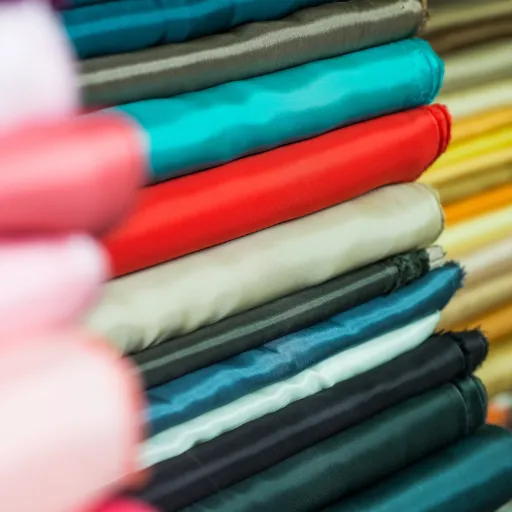
Polyester Manufacturing Process
At the very start of making polyester, the very first step is the making of the polymer. The general practice for the creation of polyester is from petrochemicals, the main ones being ethylene glycol and terephthalic acid. The process involves mixing these raw materials then heating them up to a certain temperature until the long chains of polyester are formed; the entire process might take several hours or even days depending on the desired molecular weight. The output from the process is the solid polyester that is usually in a molten, viscous state and ready for further processing.
After making the polyester, the next step is to turn it into fibers. To achieve this, the polyester is usually squeezed through a device called a spinneret that has very tiny openings; this is done through a process called extrusion. After coming out of the spinneret, the long strands of the polyester are quenched such that they become solid instantly. When the fibers are still warm or hot, they are often stretched or drawn in order to get the molecular structure of the fibers aligned; this treatment gives the fibers a good tensile strength and elasticity. The fibers are cut into desired lengths for instance or they could be left as continuous filaments for different end uses.
In the end, the polyester fibers that are obtained are now ready for the textile or other industries. Depending on the end use they may be subjected to certain finishing processes such as dyeing, coating, or mixing with other fibers to impart certain properties like softness, durability, or resistance to shrinkage.
🔧 Manufacturing Steps
- Polymer Formation: Ethylene glycol and terephthalic acid are mixed and heated to form long polymer chains
- Extrusion: Molten polyester is squeezed through a spinneret with tiny openings
- Quenching: Extruded strands are rapidly cooled to solidify
- Drawing: Fibers are stretched while warm to align molecular structure
- Cutting/Spooling: Fibers are cut to length or kept as continuous filaments
- Finishing: Dyeing, coating, or blending as needed for final application
Key Fiber Manufacturers
The world’s major polyester fiber manufacturers take the lead in the global production of polyester fiber. These companies are the source of the high-quality, versatile, and performance materials that are used in various applications like textiles, packaging, and others. Besides, they ensure the uninterrupted supply of their products to the customers.
Generally, the key manufacturers have their production facilities with huge capacities and state-of-the-art technology that enable them to produce fibers of different characteristics that can be used in multiple industries. They are very concerned about the efficiency, sustainability, and innovation in manufacturing their products being light-weight-durable, elastic, and resistant to harsh environments.
Some of the manufacturers run R&D departments to make improvements in any regard of the fiber properties, and some others are looking into new eco-friendly production methods, particularly the use of recycled materials. Continuous innovation helps in the betterment of the quality and functionality of the polyester fibers and it addresses the issue of getting a sustainable solution in the modern industry which is increasing with the passing time.
Sustainability in Polyester Production
Sustainability in polyester production is mainly an environmental impact issue that leads to the utility and performance of the material. Adoption of recycled polyester is the main method of this process and it is often made from post-consumer plastic bottles. This method helps divert waste from landfills and reduces the requirement for virgin raw materials, which in turn leads to a lower rate of greenhouse gas emissions associated with polyester production. The use of recycled materials also leads to the conservation of natural resources, for instance, the case of petroleum that is used in the making of virgin polyester, thus being the primary component.
Another sustainable advancement in the production of polyester is that of energy-efficient manufacturing processes. If the companies are to cut down on their energy consumption during production and also use renewable energy sources, they can realize a significant reduction in the carbon footprint of polyester. The research that is being conducted goes beyond just energy-efficient processes and is looking into the possible development of bio-based polyesters which would totally eliminate fossil fuels as a feedstock for polyesters and use renewable resources like plant-based materials instead.
Nevertheless, there are still some obstacles that need to be overcome in order to have complete sustainability in the polyester production process; recycling efficiency and consumer participation are two of them. The closed-loop systems where polyester clothes are recycled back into new fibers are not very common yet, but the growth is noticeable. The consumers need to be made aware of how to recycle properly and recycling facilities need to be accessible to them as well, these are the two indispensable steps in backing up this effort.
♻️ Sustainable Practices
✓ Recycled Polyester
Made from post-consumer plastic bottles, reducing waste
✓ Energy Efficiency
Lower energy consumption and renewable energy use
✓ Bio-based Development
Research into plant-based polyester alternatives
✓ Closed-loop Systems
Recycling textiles back into new fibers
Properties of Polyester Fibers
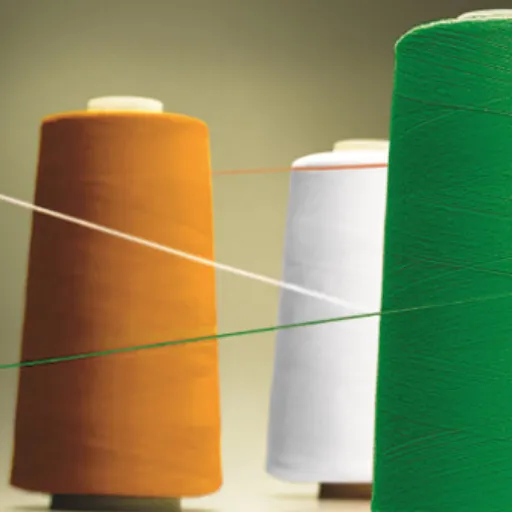
Structure and Properties of Polyester
Polyester fibers possess extraordinary structure and properties that make them applicable in a wide range of industries. Polyester on the molecular level consists of long-chain synthetic polymers produced through the reaction of acids and alcohols. These chains are connected very tightly which results in a material that is very strong, durable, and can stretch and shrink but will not break. The fibers also offer a very smooth and even surface, thus giving polyester its specialty of being light and multi-purpose.
Moisture resistance and quick drying are two major characteristics of polyester. The fabric made of polyester is hydrophobic thus it is perfect for outdoor clothing, activewear, and other uses where moisture management is very important. Besides, polyester has good wrinkle resistance which makes it one of the most favored fibers in the industry for making garments and textiles that require very little or no ironing or maintenance. Its ability to withstand different heat conditions without losing shape is another factor that makes it very suitable for this type of application.
Dye retention is another important feature of polyester fibers. Polyester colors are very bright and do not fade because the fabric keeps them well. The resistance of polyester to ambient conditions like sunlight and chemical contact also adds to its lifetime.
| Property | Description | Benefits |
|---|---|---|
| Strength | Tightly connected polymer chains | High durability, tear resistance |
| Moisture Resistance | Hydrophobic nature | Quick-drying, ideal for activewear |
| Wrinkle Resistance | Maintains shape under stress | Low maintenance, professional appearance |
| Dye Retention | Excellent color absorption | Vibrant, long-lasting colors |
| Heat Resistance | Stable in various temperatures | Shape retention, versatile use |
Dyeing Polyester Fabrics
Polyester is a synthetic material having a long life and resistance which is all the more reason for its dyeing process to use certain techniques because of the characteristics of its fibers. Polyester is arranged in such a way that it cannot absorb water, hence liquid dyes are not able to penetrate the fabric. To help the process, special steps and chemicals are used in order to get the color on the fabric properly.
The technique that is most widely used for dyeing polyester is disperse dyeing, which refers to the use of non-soluble dyes that can nevertheless be found uniformly distributed throughout the synthetic fibers. Such a process requires extremely high temperatures—generally in the range of 266°F (130°C) and 284°F (140°C)—and they are usually facilitated by a pressurized dyeing machine. The reason for the heat is to make the fibers open up just a little so the dye can go in and stick properly to the substance. Consistent temperature and time control are of utmost importance to achieve the target of beautiful colors and even results across the board.
In addition, if high pressure cannot be applied then a carrier or auxiliary chemical is commonly used to support the dyeing process at lower temperatures. These agents are doing the task of opening the polyester structure thus the dye is closer to the bonding. After dyeing treatments like rinsing and setting with heat are done to ensure that the dye will not fade away so easily, which means that the hue will be brilliant and strong, and the fabric will not lose its color over time.
🎨 Disperse Dyeing Process
| Temperature Range: | 266°F – 284°F (130°C – 140°C) |
| Equipment: | Pressurized dyeing machine |
| Dye Type: | Non-soluble disperse dyes |
| Alternative Method: | Carrier chemicals at lower temperatures |
| Post-treatment: | Rinsing and heat setting for color fastness |
Advantages of Using Polyester Fibers
In the textile industry, polyester fibers have been widely accepted because they are the most durable and the most flexible synthetic fibers. One of the main attributes of this material is its strength which makes polyester less prone to tearing or stretching compared to its plant-based counterparts. This characteristic not only prolongs the life of the fabric but also maintains its original look and feel throughout the period of use and washing, thus providing long-lasting performance.
Durability is one of the most significant advantages of polyester fibers among their competitors. They have great resistance to heat, light, and even mildew which characteristics just suit them for various applications such as clothing, upholstery, and outdoor textiles. Besides, the quick-drying and moisture-wicking properties of polyester make it a very good choice for activewear and sportswear.
Another attribute of polyester fibers is their design and functionality versatility. They can be mixed with other fibers at will to produce hybrid fabrics that incorporate the best of each fiber’s qualities. Also, polyester is very customizable and can be given a lot of different colors during the dyeing process, thus guaranteeing vibrant and long-lasting results. These features not only contribute to the variety of uses and their economic aspect but also to the adoption of polyester in both fashion and industrial sectors.
💪 Superior Strength
Highly resistant to tearing and stretching, outlasting natural fibers in durability
🌡️ Multi-Resistant
Excellent resistance to heat, light, and mildew for diverse applications
🎨 Versatile Design
Easily blended with other fibers and accepts vibrant, long-lasting dyes
Applications of Polyester Fibers

Polyester in Fashion and Apparel
The characteristics of durability, versatility, and low cost have made polyester a cornerstone material in the fashion and apparel industry, thus making it widely used in the production process of clothing. It is preferred because it is light in weight, is resistant to creases, and keeps its shape even after numerous washes. The durability of the fabric combined with its good features makes it fit for ordinary, active, and professional wear as it is both comfortable and stylish.
Polyester is one of the most important materials in fashion due to its unique quality of being able to mix and match with other fibers like cotton or wool to develop the fabric combinations that offer breathing, softness, and toughness in a single fabric. Besides, polyester’s ability to absorb bright colors very well prompts the creation of bold, long-lasting patterns and colors in the garments. This quality makes it the choice of many designers who are looking for high-quality aesthetics in their works.
In addition, the use of polyester in sustainable fashion has been a breakthrough in this respect. A large number of makers are producing recycled polyester these days which results in a lesser environmental impact of garment production due to the reuse of already available materials. This not only caters to the green consumer trends but also highlights the major role of polyester in the changing fashion industry as well as its future potential.
👕 Fashion Applications
Everyday Wear
Casual shirts, pants, dresses
Activewear
Sports clothing, athletic gear
Professional Wear
Business attire, uniforms
Blended Fabrics
Cotton-poly, wool blends
Home Textiles and Upholstery
Polyester, without a doubt, is a foundational material in the home textiles and upholstery sector. Its durability and flexibility are the main factors for the choice of those items which include curtains, cushions, and sofa covers. Polyester fabric holds its shape and looks nice over the years due to its resistance to shrinking, stretching, and wrinkling. Also, its fading and mildew resistance gives it suitability for both indoor and outdoor furniture.
The price and maintenance of polyester have attracted it to the home furnishing sector. The fabric of polyester is frequently more economical in terms of cost compared to that of natural fibers such as cotton or wool thus the wider range of consumers can use it. In addition, polyester is machine washable, quick drying, and very easy to maintain which also makes cleaning of household textiles and items effortless. Its capacity to be blended with other fibers helps the fabric in getting the desired softness or strength where needed.
Sustainability is more and more the driving force behind the use of polyester in home textiles and upholstery. Several manufacturers have started using recycled polyester which is a clever way of reducing one’s carbon footprint. Recycled polyester, made from post-consumer plastics and waste, is thus in harmony with eco-friendly practices since it is at the same time offering the high performance expected in home textiles.
| Product Category | Common Items | Key Benefits |
|---|---|---|
| Window Treatments | Curtains, drapes, blinds | Fade-resistant, easy to clean |
| Upholstery | Sofas, chairs, cushions | Durable, shape retention |
| Bedding | Comforters, pillows, sheets | Hypoallergenic, low-maintenance |
| Outdoor Furniture | Patio cushions, covers | Weather-resistant, mildew-resistant |
Polyester Usage in the Automotive Industry
Polyester is highly regarded in the automotive sector for its diverse range of properties, durability, and low price. The main uses of the material are in the production of vehicle interiors, where the seats, carpets, and door panels are made of polyester fabrics. Its properties of being very hard-wearing, being able to tolerate heat, and not being easily stretched are the reasons why it is the most suitable material for use in daily car operations which are quite demanding.
Polyester is used extensively in the manufacture of car parts that concern safety and performance among other things. When it comes to the production of seat belts, not only is polyester a major component but its high tensile strength also ensures that seat belts are dependable and safe during emergencies. Moreover, it is used to strengthen tires and as a component in airbags which indicates that the material is indeed very vital in improving vehicle performance and passenger safety.
When looked at from the environmental point of view, polyester is also a supportive factor in the sustainability of the industry. The automotive sector is progressively opening itself to the general use of recycled polyester in both applications to help in waste reduction and carbon emission lowering. This technique not only lowers the cost of production but also helps manufacturers to be part of eco-friendly initiatives.
🚗 Interior Components
- Seat upholstery
- Carpeting
- Door panels
- Headliners
🛡️ Safety Components
- Seat belts
- Airbags
- Tire reinforcement
- Safety harnesses
♻️ Sustainability
- Recycled polyester use
- Waste reduction
- Lower carbon emissions
- Cost-effective production
Frequently Asked Questions (FAQ)
Q: What are polyester fibers and how are they made?
A: Polyester fibers are synthetic fibers made from polyethylene terephthalate (PET) or other related polyester polymers. In making polyester, its monomeric precursors such as ethylene glycol and dimethyl terephthalate or terephthalic acid are subjected to polycondensation followed by melting the polymer into molten polyester and then spinning it through a spinneret to produce either continuous fibers or staple fibers.
Q: What is the chemical structure and composition of polyester?
A: In general, the chemical structure of polyester shows the repeating ester functional groups along the main chain; for instance, PET fiber comes about by linking terephthalic acid (or dimethyl terephthalate) with ethylene glycol. This particular arrangement of atoms gives thermoplastic polyester properties which means the polyester resin can be heated and formed again. There are some cases like PTT fiber or PBT fiber that change the mechanical features and the performance so they can be applied to specific areas.
Q: What are the main types of polyester fabric and fibers?
A: Polyester filament, textured polyester, microfibers, and staple PET fiber are the main types of polyester fabric. At the same time, there are the synthetic variations like plant-based polyester and recycled PET, as well as copolymers PBT and PTT fiber. In creating standard polyester, it is often blended with other fibres such as cotton or wool to provide desirable properties like abrasion resistance, drape, and moisture management.
Q: Why are polyester fibers widely used in textiles and industrial applications?
A: The fibers of polyester are really popular as they give the textiles amazing properties and sometimes even better than cotton, like they are stronger and more resistant to wear, and they are also not as affected by temperature and chemicals as other fabrics. Polyester is the main fiber for apparel, upholstery, outdoor gear and technical uses like ropes or belts.
Q: How do polyester fibers compare to natural and other synthetic fibers?
A: Polyester, like other synthetic fibers, is strong and resistant to environmental factors, but it usually surpasses a lot of natural fibers in abrasion resistance and washability. If you compare polyester and cotton, polyester is less absorbent but dries faster and wrinkles less; if you compare it with nylon, polyester can have better UV stability. Polyester needs to be blended with other fibers to achieve the right combination of comfort and performance.
Q: What are common manufacturing brands and specialty polyesters?
A: Companies such as DuPont that are well-known have been developing and discovering specialty polyester-based products and the corresponding processes throughout history. Among the various manufacturers, some produce PET fiber (polyester PET) and polyester resin formulations. Depending on the additives and processing, specialty fibers like PTT fiber or branded polyester variations provide improved stretch, softness, or abrasion resistance. The range of applications includes pillows and bedding, technical fabrics for liquid crystal displays, and other industrial uses.
Q: Are polyester fibers sustainable and can they be recycled or plant-based?
A: Most of the time, polyester is fabricated from crude oil-derived petrochemical feedstocks, but in the recent past, recycled PET and plant-based polyester alternatives have become more available. The recycled polyester product line utilizes less virgin crude oil than before, whereas plant-based polyester is the one that aims to replace the petrochemical content with biomass. Even though the process of polyester recycling already exists, there are still some challenges in areas such as the recycling stream of textiles and the problem of keeping the fiber quality. Nevertheless, producing polyester from recycled PET is one of the strikingly effective strategies in terms of polyester sustainability.
Q: What performance properties make polyester suitable for products like pillows, outdoor gear, and technical textiles?
A: The strength, resilience, and abrasion resistance of polyester fibers are all excellent, hence making the fibers appropriate for pillows, upholstery, and outdoor gear. The thermoplastic nature of polyester allows the fibers to be heat-set for perpetuity in shapes and textures. Polyester for pillows can be blended or treated for improved softness or enhanced water repellency for outdoor fabrics. The mechanical properties and the desirable properties make the polyester fiber an excellent choice in the frequent manufacture of items where durability and shape retention are crucial.
References
-
Wikipedia: Polyester – Provides an overview of polyester fibers, their properties, and applications.
-
Sewport: What is Polyester Fabric – Explains the properties, production process, and uses of polyester fabric.
-
ScienceDirect: Polyester Fiber Overview – Offers a detailed look at the composition and applications of polyester fibers.








